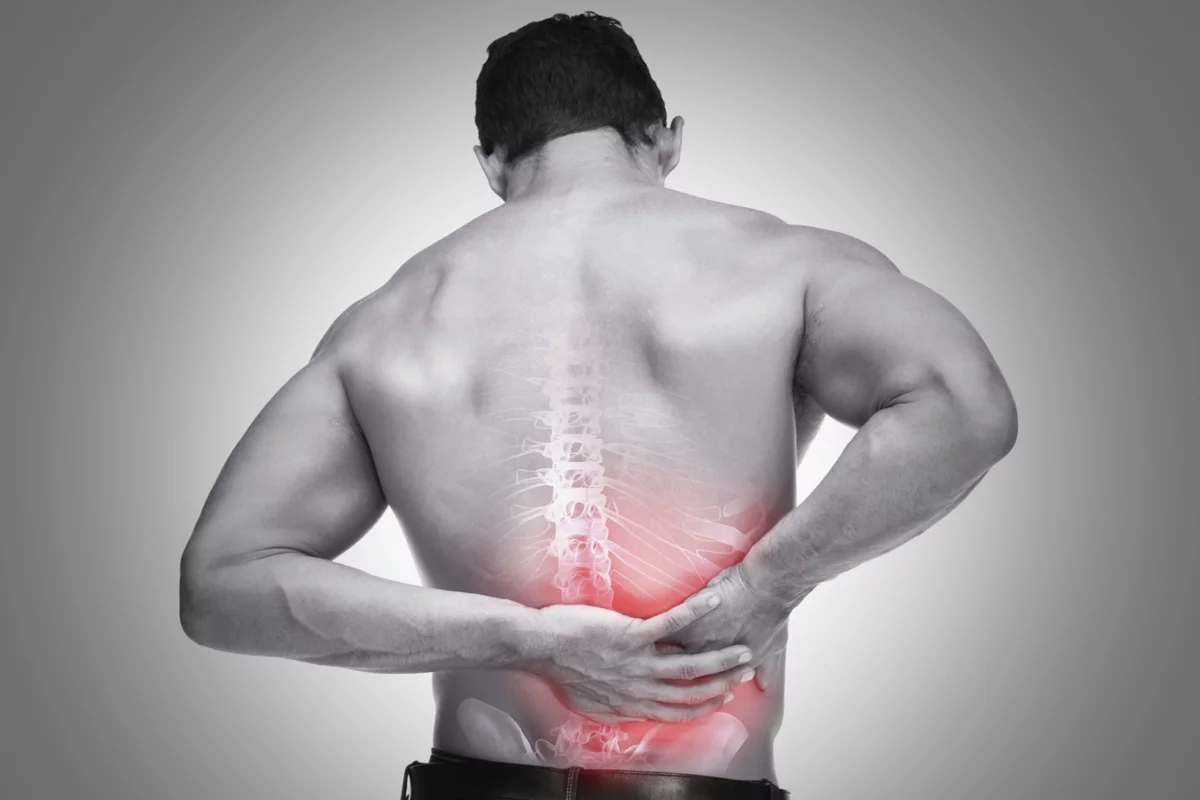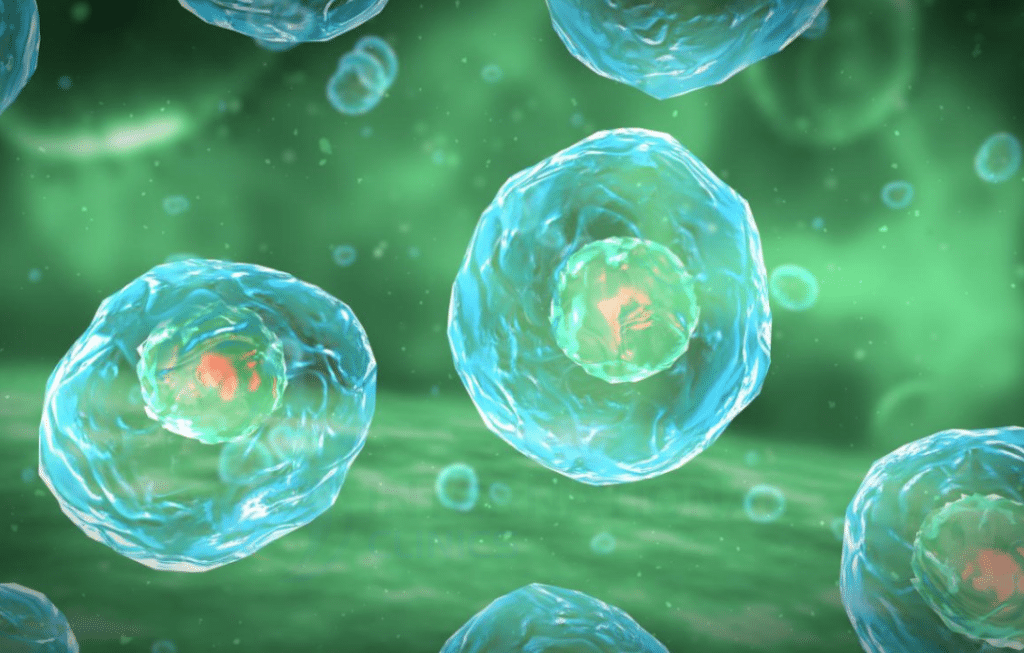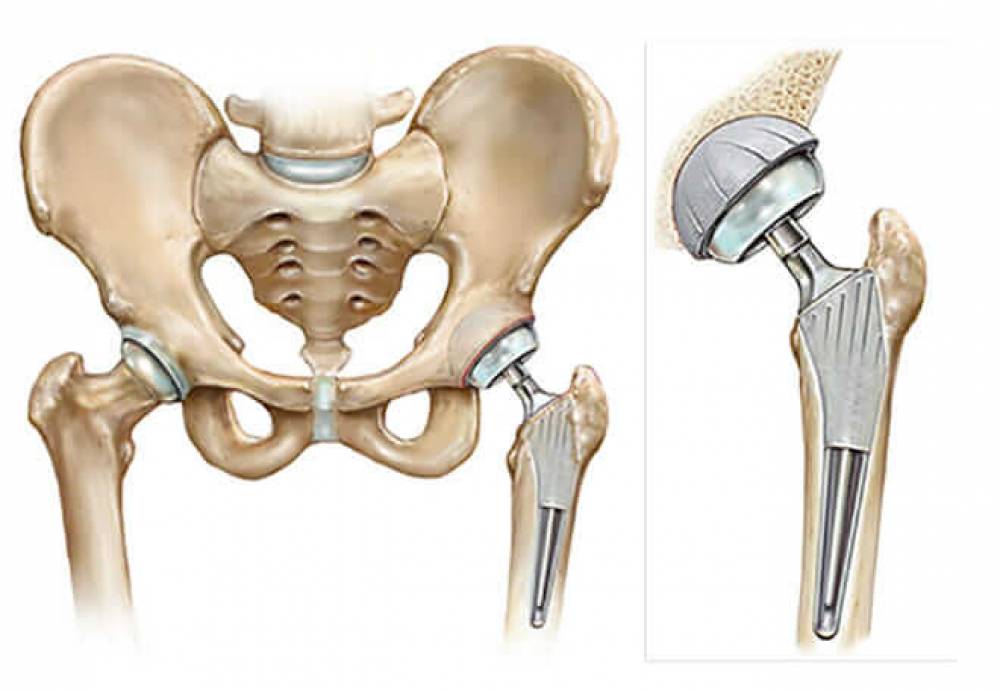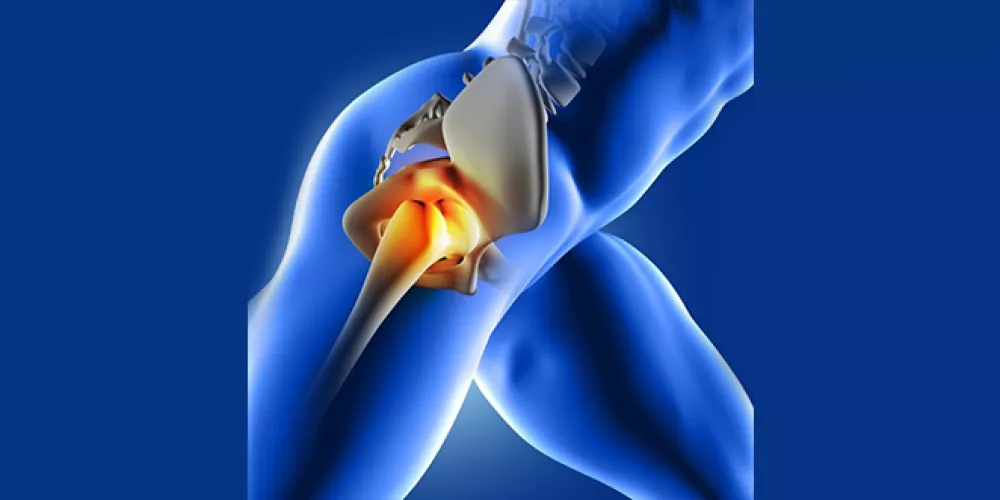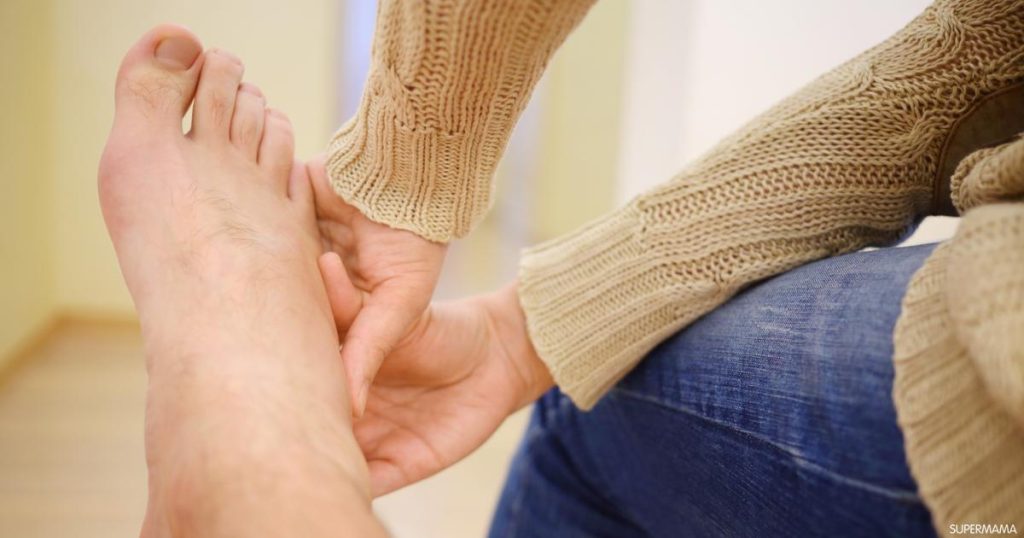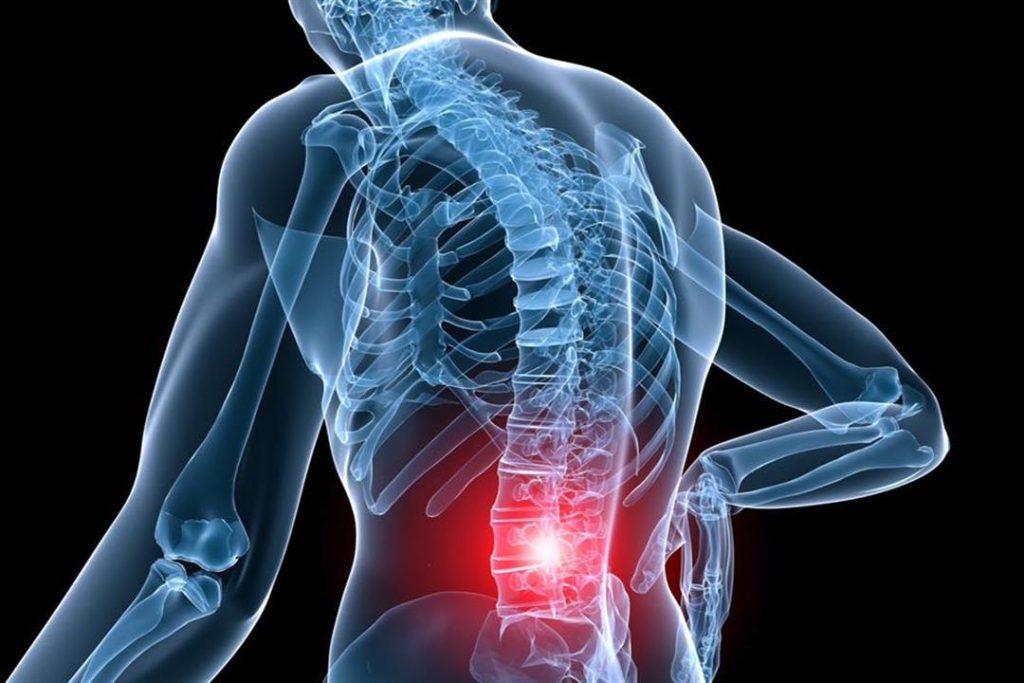What are the causes of night sweats? Is a back brace helpful in treating them?
أخر تحديث :
What are the causes of sciatica?
- Disc herniation: This is the most common cause of sciatica, occurring when the spinal disc moves out of place and presses on the sciatic nerve, leading to pain and numbness in the leg and foot.
- Bone overgrowth: In some cases, excessive bone growth in the spine can cause pressure on the sciatic nerve, resulting in sciatica symptoms.
- Sciatic nerve inflammation: Inflammation of the sciatic nerve can occur due to irritation or inflammation in the nearby area, leading to symptoms of sciatica.
- Sciatic nerve stress: The sciatic nerve can be put under additional pressure due to activities like prolonged sitting or improper exercise, causing sciatica. It’s important to note that there are other rare causes of sciatica, including spinal cord or sciatic nerve damage or injury. In some cases, a specific cause for sciatica may not be identified.
To prevent or alleviate sciatica symptoms, it is advised to avoid heavy lifting, maintain good posture while sitting and sleeping, and engage in core-strengthening exercises. Consultation with a healthcare provider is recommended for the assessment of the condition and determination of appropriate treatment, whether surgical or non-surgical.
How do I know if I have sciatica?
Sciatica can be diagnosed based on the following symptoms:
- Back pain: Pain typically starts in the lower back, often beginning mildly and gradually increasing in intensity. It becomes sharp when engaging in physical activities like walking or standing for extended periods.
- Hip and buttock pain: The pain extends from the back down to the back of the thigh and buttocks. Numbness or tingling sensations can accompany the pain in these areas.
- Knee weakness: The individual may experience weakness in the knee muscles, making it difficult to move the leg properly.
- Foot numbness and tingling: There may be sensations of numbness and tingling in the toes and the lower part of the foot. This occurs due to compression of the spinal disc or irritation of the sciatic nerve.
- Increased pain when sitting or prolonged standing: Pain can intensify when remaining in a specific position for an extended period.
To confirm the diagnosis of “sciatica,” the affected individual should visit a doctor for necessary examinations and tests. These tests may include a physical examination, the patient’s medical history, and radiological imaging such as X-rays or magnetic resonance imaging (MRI).
Once a precise diagnosis is made, the appropriate treatment for sciatica is determined. Non-surgical treatment may include non-pharmacological measures such as physical therapy and rehabilitation exercises. Surgical treatment may be considered in more advanced cases or when the patient does not respond to non-surgical treatment.
Sciatica is a medical condition that can cause severe pain and affect daily mobility. Therefore, early detection and proper medical care are important for preventing the worsening of symptoms and improving the quality of life.
Is sciatica on the right side or the left side?
Sciatica is a medical condition characterized by severe pain, numbness, and tingling sensations in the back and lower limbs. This pain is often accompanied by burning or shooting sensations in the buttocks, leg, or foot. Typically, this pain worsens when sitting for extended periods or engaging in strenuous physical activities. Sciatica usually occurs as a result of a herniated disc in the spine compressing the sciatic nerve.
The symptoms of sciatica can vary from person to person, and some may experience pain on the right side, while others may feel it on the left side. This depends on the location of the compression or pressure on the sciatic nerve.
Diagnosing sciatica is typically done through clinical examination and the patient’s medical history. It may also require diagnostic tests such as magnetic resonance imaging (MRI) of the spine to determine the location of the narrowing or pressure on the sciatic nerve.
Sciatica is usually treated with medical measures to alleviate pain and reduce muscle spasms around the sciatic nerve. These measures may include taking pain-relieving and anti-inflammatory medications, as well as physical therapy and gentle exercises. In some more advanced cases, surgical treatment may be necessary.
It is important to emphasize that the location of pain on the right or left leg is not a specific factor for diagnosing sciatica. It requires a comprehensive diagnosis and treatment based on symptom assessment and necessary tests.
It is also important to seek specialized medical attention if you experience persistent or worsening pain or if there are changes in your symptoms. Early diagnosis and necessary treatment can be key to achieving improvement and preventing the worsening of your condition.
Does sciatica heal on its own?
Yes, most individuals with sciatica improve on their own over time. Here are some key facts and information about sciatica and its ability to heal on its own:
- The pain associated with sciatica occurs due to irritation, inflammation, or compression of the nerve in the lower back area. The most common cause of this is a herniated disc, which puts pressure on the nerve root.
- Sciatica is characterized by numbness and severe pain in the lower back area. There are both surgical and non-surgical treatments for sciatica, including pain-relieving medications, muscle massage, and physical therapy exercises.
- Individuals with sciatica should avoid lifting heavy objects, prioritize rest, and follow the treatments prescribed by doctors. Maintaining good body posture while sitting and walking may help improve sciatica symptoms.
- In most cases, herniated discs are the primary cause of sciatica, and this typically occurs with age. Pain often subsides in many cases without the need for intensive treatments. However, if the pain persists, various methods to alleviate pain, including prescription medications prescribed by doctors, can be tried.
- The main cause of sciatica is usually a herniated disc or increased bone growth in the spinal vertebrae. There are also less common causes of sudden back pain, which can result from a minor nerve injury, causing the body to protect itself through tension.
- Caution and care are advised in diagnosing and treating sciatica, and it is essential to consult a specialist before starting any treatment. Individuals with sciatica should avoid stress and limit strenuous physical activities that may worsen the pain.
- It is crucial to note any other chronic medical conditions, medications, vitamins, or dietary supplements that may affect the condition of sciatica.
Consulting a specialist is necessary for an accurate diagnosis and treatment of sciatica according to each individual’s condition. People with sciatica should stay in touch with their doctor for evaluating improvement and adjusting treatment as needed.
What does a sciatica patient reveal to Dr. Amr?
Dr. Amr Amal, a specialist in orthopedic and joint surgery at Ain Shams University in Egypt, is considered one of the leading doctors in his field. He holds a doctorate in orthopedic surgery from Ain Shams University and works at Dar Al Fouad Medical Tower.
Dr. Amr Amal has an impressive educational background, serving as a faculty member at Ain Shams University and as an orthopedic surgery lecturer at the same university. He has also worked as a fellow in orthopedic surgery at the German Aachen Hospital.
Dr. Amr Amal specializes in treating joint stiffness and joint pain, utilizing a variety of treatment methods such as medication, local injections, arthroscopic surgery, and various joint surgeries. He also provides consultations for sports injuries.
In this regard, Dr. Amr Amal states, “I always strive to provide the best medical services to my patients and aim to achieve the best results through modern and effective approaches in the field of orthopedic and joint surgery. I care deeply about the health and comfort of my patients, and improving their quality of life is my ultimate goal.”
With this in mind, Dr. Amr Amal is an excellent choice for those seeking treatment for sciatica. He combines professional competence with extensive experience in his field.
Does walking help in treating sciatica?
Walking is one of the most effective and beneficial exercises for treating and alleviating sciatica pain. When you suffer from this condition, movement and the ability to perform daily activities become challenging and painful. Walking plays a role in improving overall health and reducing the pain associated with the sciatic nerve.
Here is a list of reasons that make walking an effective method for treating sciatica:
- Reduces pressure on the sciatic nerve: Walking helps reduce the pressure on the sciatic nerve, which contributes to relieving the pain associated with this nerve. Therefore, walking is a natural and safe way to reduce sciatica pain.
- Strengthens the back and buttock muscles: Walking requires the continuous use of the back and buttock muscles, leading to their strengthening and increased strength. When these muscles are strong, they help stabilize and improve the posture of the spine, reducing the likelihood of irritating the sciatic nerve and exacerbating sciatica pain.
- Increases blood circulation: Walking leads to increased blood and oxygen flow to various parts of the body, including the affected sciatic nerve. This promotes the healing process and helps reduce inflammation and pain.
Improving Flexibility and Muscle Strength: Walking is considered one of the best exercises for enhancing overall body flexibility and muscle strength. You may have tight or weak muscles in the affected sciatic nerve area. Therefore, by walking regularly, you can strengthen these muscles and improve their flexibility, leading to the alleviation of sciatica pain.
Enhancing General Health: Walking is among the physical fitness activities that have a positive impact on overall health. It contributes to improving physical fitness, lowering blood pressure, regulating blood sugar levels, and enhancing heart and vascular health. When you have improved general health, your body finds it easier to balance and recover from health problems such as sciatica.
If you are suffering from sciatica, walking can have a positive impact on your health. However, it is always recommended to consult a doctor before starting any physical activity or treatment program. Your doctor may suggest specific exercises aimed at improving your condition and reducing sciatic nerve pain.
Does sciatica show up on X-rays?
One of the common symptoms of sciatica is severe pain that radiates from the lower back through the buttocks and down to the legs. Sciatica is a condition of numbness and severe pain in the back resulting from a herniated disc in the spinal column. There are several treatment options for this condition, both surgical and non-surgical.
In surgical treatment, a procedure is performed to remove the affected disc or repair the torn disc. This treatment may be necessary in cases of severe pain that affects daily mobility. However, surgical treatment can be risky and requires a long recovery period, so other steps are taken before resorting to this treatment.
Non-surgical treatments include physical therapy exercises, taking breaks from strenuous physical activities, applying localized ice and heat to the affected area, and taking pain-relieving medications that can be prescribed by a doctor. It is also advised to avoid lifting heavy objects and maintain good body posture while sitting and sleeping.
There are ways to prevent sciatica in addition to the precautions mentioned above. Regular exercise is essential to strengthen the supportive muscles of the spine and improve flexibility. Wearing a supportive back brace during strenuous physical activities can also help reduce pressure on the spine.
Ultimately, patients should consult with specialized doctors about their condition and follow their guidance carefully. Doctors may recommend X-rays to confirm the diagnosis of sciatica and determine the appropriate treatment. If there are any other accompanying symptoms such as numbness or weakness in the legs, it is essential to inform the doctor promptly for necessary care.
What Are the Risks of Sciatica?
- Age: Spinal deformities such as herniated discs and bone spurs become more common with age and can lead to issues with the sciatic nerve.
- Sciatic Nerve Inflammation: Sciatica is a result of inflammation of the sciatic nerve, the largest nerve in the lower back area. This inflammation can cause severe and intense pain in the lower back, buttocks, legs, and feet.
- Spinal Deformities: A herniated disc and bone spurs in the spine can compress a part of the sciatic nerve, leading to inflammation, pain, and numbness in the leg.
- Spinal Diseases: Some spinal conditions like arthritis and spinal stenosis can cause pressure or irritation of the sciatic nerve, thereby causing sciatica.
- Heavy Lifting: Improperly lifting heavy objects can strain the spine and increase pressure on the sciatic nerve.
- Poor Sitting Posture: Prolonged periods of sitting in a poor posture can exert extra pressure on the spine and raise the risk of sciatica.
- Obesity: Excess weight and obesity can put additional pressure on the spine and increase the likelihood of developing sciatica.
- Intense Physical Activity: Engaging in strenuous physical activities improperly or without adequate warm-up can raise the risk of injuring the sciatic nerve and developing sciatica.
- Genetic Factors: There may be genetic factors that make some individuals more prone to the risk of developing sciatica.
- Pregnancy: During pregnancy, weight gain and pressure on the spine can increase the likelihood of developing sciatica in pregnant women.
Regardless of the risks associated with sciatica, it is crucial to consult a specialized doctor for diagnosing your condition and providing appropriate treatment.
What Is Natural Treatment for Sciatica?
There are several steps that can be taken to treat sciatica naturally. Here is a list of some natural treatments that can be beneficial for managing sciatica:
- Spinal Strengthening Exercises: Exercises that strengthen the muscles of the back, buttocks, and legs can play a crucial role in strengthening the spine and improving muscular stability. Exercises like forward and backward bends, leg raises, sitting on the floor, jumping jacks, and others can be helpful.
- Physical Therapy: Physical therapy can help improve the overall condition of the spine and strengthen the surrounding muscles. Physical therapy sessions may include techniques such as Transcutaneous Electrical Nerve Stimulation (TENS), ultrasound therapy, and deep tissue massage.
- Herbal Remedies and Dietary Supplements: There are many herbs and dietary supplements believed to help reduce pain and improve the overall condition of sciatica. Some beneficial herbs include turmeric, black pepper, ginger, Boswellia, and cinnamon. Before taking any of these herbs, it’s essential to consult a doctor or a specialized practitioner.
- Hot and Cold Therapy: Hot and cold applications can be used to alleviate pain and inflammation associated with sciatica. Ice packs can be used to reduce inflammation in affected areas, while heating pads or hot water bottles can be used to relieve pain and improve blood circulation in the affected area.
- Nutrition Care: Having a healthy and balanced diet is essential to promote overall healing and improve spine health. Ensure that your diet includes foods rich in fiber, protein, and essential fatty acids while avoiding processed foods with added sugars.
If these natural strategies do not lead to an improvement in symptoms, it is advisable to consult a doctor for a proper evaluation and guidance on appropriate treatment. Remember, always consult your physician before starting any new treatment.
What Is Pseudo-Sciatica?
Pseudo-sciatica is a rare neuromuscular disorder that causes painful symptoms such as pain and numbness in the buttocks, hip, and the back of the legs. This disorder arises due to the spasms of the sciatic nerve, which occur due to repeated use of the legs, such as running and other physical activities.
Pseudo-sciatica occurs when a portion of the sciatic nerve is compressed due to disc herniation or excessive bone growth in the nearby vertebrae. This leads to inflammation and irritation of the nerve, causing sharp and uncomfortable pain along the sciatic nerves.
The sciatic nerve is of great importance as it extends from the back to the buttocks and downwards to the legs, terminating just below the knee. Therefore, when there is a disorder in the nerve, it can affect a person’s ability to walk and perform daily activities normally.
Common symptoms of sciatica generally include continuous, sharp pain in the sciatic nerve area, tingling and numbness in the legs and feet, swelling of the lower limbs, and muscle weakness. Pain may worsen during simple activities such as walking or standing for extended periods.
Pseudo-sciatica can be treated through various methods, including surgical and non-surgical treatments. Surgical treatment may involve the removal of a herniated disc or the removal of excessive bone growth in the affected vertebrae.
Additionally, individuals with pseudo-sciatica should avoid lifting heavy objects and strenuous movements that could increase pressure on the sciatic nerve. Paying attention to sitting and sleeping positions and taking other preventive measures can help reduce nerve irritation and alleviate pain.
In general, pseudo-sciatica is a medical condition that requires evaluation and treatment by a specialized doctor, and individuals with the disorder can live a healthy and active life by following appropriate treatments and taking preventive measures.
How Long Does Sciatica Pain Last?
The duration of sciatica pain depends on several factors and can vary from person to person. The pain may last for a short period, ranging from a few days to a few weeks, and in some rare cases, it may persist for months. Here is an overview of the duration of pain following exposure to sciatica:
- Acute Sciatica Episode:
- Symptoms may last for approximately one to two weeks. Acute episodes usually resolve spontaneously within a few weeks without the need for specific treatment.
- Chronic Sciatica:
- If the pain continues for more than 8 weeks, it may be considered chronic sciatica. In this case, the individual may require surgical or non-surgical treatment to alleviate symptoms and improve their condition. Surgical treatment may have a longer recovery period.
- Treatment Effect:
- The duration of pain may vary based on the type of treatment and its impact on the body. Some individuals may experience significant improvement after non-surgical treatment lasting about 4-6 weeks. However, cases that respond more slowly may require a longer time to recover.
Regardless of the duration of pain, it is essential not to ignore it and consult with a specialized doctor. Severe symptoms or persistent pain over an extended period may require medical evaluation and monitoring to determine the precise cause of the symptoms and identify the best treatment options. Ensure you prioritize rest, avoid lifting heavy objects, and follow appropriate preventive measures to reduce the likelihood of symptom exacerbation.
Is a Back Brace Helpful for Sciatica?
A back brace is a support device that wraps around the waist and is secured with a buckle or adhesive strap. Back braces have been used for a long time to provide support and stability to the spine in various conditions, including sciatica. A back brace is considered one of the available options for reducing pain and improving mobility in the back area.
The effectiveness of a back brace in treating sciatica depends on the individual’s condition and the nature of the problem. Some individuals find that using a back brace helps them alleviate pain and increase their tolerance for daily activities. A back brace provides support to the spine and reduces pressure on the sciatic nerves affected by disc herniation.
It’s worth noting that using a back brace for treating sciatica is not the sole treatment available. It should be used as part of a comprehensive treatment plan, which may include taking pain relievers, undergoing physical therapy, and strengthening the muscles surrounding the spine.
Consultation with a doctor is recommended before using a back brace or any alternative treatment for sciatica. Additional tests and consultation with a specialist may be necessary to determine the best treatment options for you.
In general, a back brace can be considered a temporary tool for pain relief and improved mobility in cases of sciatica. However, the primary focus should be on addressing the underlying cause of the condition, such as therapeutic exercises, improving body posture, and enhancing muscle strength.
How Can I Get Rid of Sciatic Nerve Pain?
Many individuals suffer from sciatic nerve pain, which can be extremely painful and affect their daily quality of life. However, there are several steps you can take to alleviate this troublesome pain effectively and get rid of it. Here are some ways that can help you get rid of sciatic nerve pain:
- Improve Sitting, Standing, and Sleeping Posture: Practicing good and proper posture for sitting, standing, and sleeping can help reduce pressure on the lower back and the sciatic nerve.
- Avoid Prolonged Sitting: It is advisable to avoid sitting for extended periods as prolonged sitting increases pressure on the sciatic nerve during its transition to the legs. Taking short breaks for standing and walking during long sitting sessions is recommended.
- Engage in Regular Exercise: Regular physical exercise is an effective way to reduce the risk of developing sciatic nerve inflammation. Aerobic exercises, strength training, and muscle stretching can be beneficial. Avoid irritating activities that may increase pain and exacerbate the condition.
- Stretching Exercises: Stretching exercises can help relieve muscle and ligament tension around the sciatic nerve. This includes exercises like hamstring stretches, where one leg is placed on an elevated surface while stretching the other leg backward, stretching the muscles surrounding the sciatic nerve.
- Use Hot or Cold Packs: Hot or cold packs can be used to relieve pain and reduce inflammation. They can be applied directly to the painful area for 15-20 minutes several times a day.
- Medical Treatment: Some cases may require medical assistance to treat sciatic nerve pain. Doctors can create a personalized treatment plan that includes conservative treatment and recommendations for symptom relief. Medical treatments may involve corticosteroid injections around the sciatic nerve root to reduce pain and inflammation.
- Avoid Overexertion: It is essential to avoid engaging in activities that require excessive effort and heavy lifting. Lifting heavy weights improperly can increase the risk of developing sciatic nerve inflammation.
Finally, individuals suffering from sciatic nerve pain should continue to follow up with a physical therapist or doctor for guidance and an accurate diagnosis. Chronic and persistent treatment may be required to control symptoms and prevent worsening pain.

